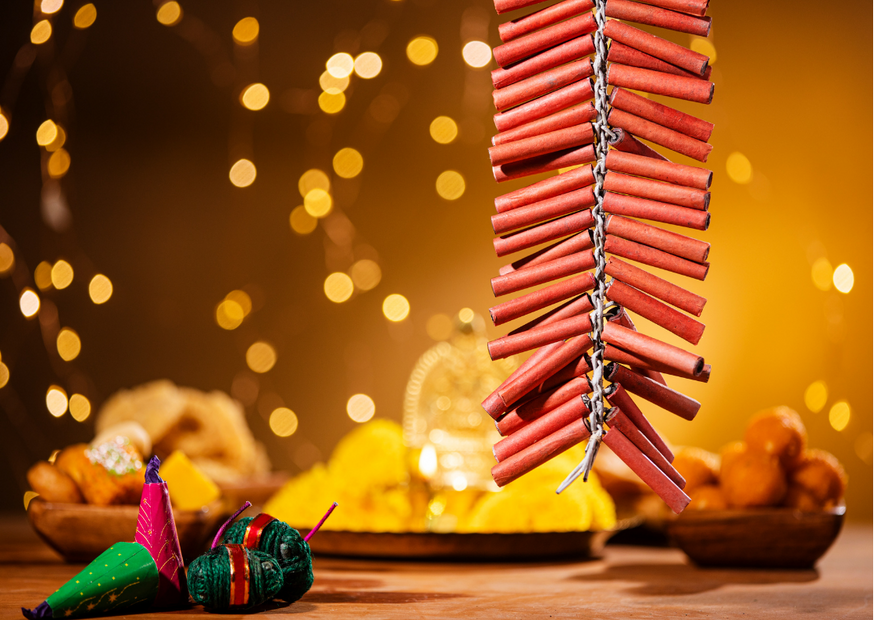The Supreme Court ban on crackers is not in keeping with the times but also needs to be implemented with missionary zeal. There is nothing anti-Hindu about the ban.
Hinduism lives and breathes nature, respects diversity and enjoins followers to take care of the air, water and soil around them.
There’s a reason why. The Indian civilisation flourished along rivers, reached its zenith and died alongside, possibly because this valuable resource became scarce. No one was better aware of this than the ancient Indian.
Though much has been lost because we as a civilisation never recorded history, the myriad superstitions and beliefs regarding flora and fauna show how much they believed in sustainable environmental practices.
Here are some common examples; don’t disturb a plant at night. Pluck a plant after you have watered it and sought its forgiveness for hurting it i.e., as in tulsi.
Don’t pluck young plants. Mango twigs used in a puja can only be from a fully grown tree. Don’t cut fruit-bearing trees. Worship banyan, peepal and neem. Don’t sleep under a tree at night and so on. Don’t throw household waste into a pond.
In villages, one had separate ponds for bathing and other ablutions. Even to this day, every house in a village has a pit for kitchen waste.
There are other practices which mandate eating saag every day, especially moringa. In Odisha, every house front had at least one moringa plant much before it was declared a superfood. Now it’s a vanishing species.
Most used neem datuns. In springtime, neem flower and leaf fry were a must. Turmeric paste was widely used to improve skin texture and get rid of body hair. Banana ash was used as fertilizer and to make natural colours.
Women routinely drank fermented rice water. The cracks at the corner of the mouth, attributed to Vitamin B12, are a recent phenomenon.
There were small fruit-bearing plants in every courtyard such as guava and pomegranate apart from the ubiquitous tulsi.
Village common grounds had wetlands which conserved water for the crops, animals and kept the village cool.
Huge orchards dotted the landscape. Those in the vanaprastha and sanyasa stage, irrespective of gender, did nothing other than plant trees. As a result, there was no scarcity.
Villages were places of plentiful supply of fruits, vegetables, berries and fish.
Much of these traditions have fallen by the wayside, violently disrupted possibly by several hundred years of British rule. Now all is dry and arid. Wells and ponds have dried up due to disuse.
Of late though some of these good practices are being reclaimed by the genuine adherents of India’s vast cultural traditions.
Others need to be similarly resuscitated. Some have been. One now sees eco-friendly Ganeshas in planters, clay idols in puja mandaps without the chemical paints, and green diyas as well.
People have almost gravitated towards community celebrations during Holi with skin-friendly stuff such as haldi, besan and chandan.
All these incremental changes will cumulatively have the impact of reducing plastic use all around and also minimise use of harmful chemicals.
We no longer throw our idols into water bodies in some cities. We divert them into artificially created water bodies.
We have been practical enough to switch to electric crematoria to save wood. Why can’t we digest a temporary ban on crackers while we come up with green crackers?
Surely commercial interests are not paramount. Once we switch to green crackers — no making them is not an impossibility — it’s a win-win for one and all, not Hindus alone.
Strangely enough, we have instead seen carefully orchestrated moves to attack the religious beliefs of judges who have passed such an order.
One of them had to announce in court that he wasn’t anti-Hindu and did not believe that not bursting crackers would take away from the significance of the festival.
Diwali is a festival of lights not sound. Crackers were first developed in China in 200 BC but the pyrotechnics associated with Diwali may not be as hoary as previously thought of.
Even if it were, nothing is lost in introspecting, why we can’t breathe on Diwali, and in making a course correction.

